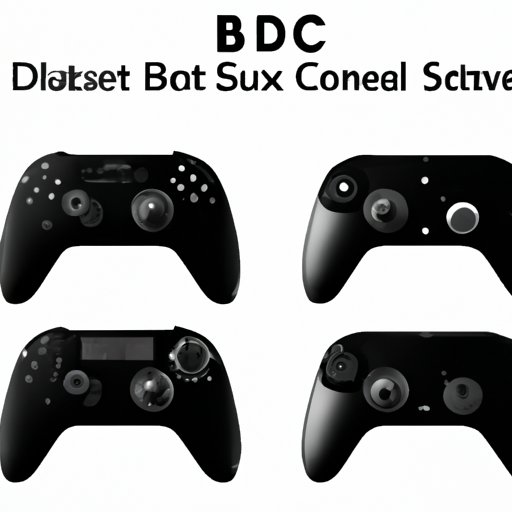
Introduction
Are you tired of using a keyboard and mouse to play your favorite games or watch movies on your PC? Look no further than connecting a controller to your computer! Not only does it provide a more comfortable and familiar gaming experience, but it can also enhance media playback. In this article, we’ll explore the various ways to connect a controller to your PC, review the different types of controllers available, and provide troubleshooting tips.
Connecting a Controller to a PC via USB Cable
The most straightforward way to connect a controller to your PC is via a USB cable. Follow these simple steps:
- Plug one end of the USB cable into your controller and the other end into an available USB port on your computer.
- Your PC should detect the controller automatically. If not, check to see if your controller needs drivers installed. You can typically find these on the manufacturer’s website or use a third-party driver updater.
- Once the controller is detected, you should be able to use it right away. You can test that it’s working by opening a game or media player and trying out the buttons.
If you run into any issues, try the following:
- Make sure the USB cable is securely plugged in
- Restart your computer
- Try a different USB port
- Update your drivers
Video Tutorial
In case you prefer a visual guide, we’ve created an easy-to-follow video tutorial:
If you encounter any issues during the setup process, refer back to the step-by-step instructions outlined above for troubleshooting tips.
Controller Reviews
If you’re in the market for a new controller, there are various options available that work with PCs. Here are some of the most popular:
Xbox One Controller
The Xbox One controller is a popular choice for PC gamers due to its comfortable design and plug-and-play functionality. It works seamlessly with Windows 10 and supports Bluetooth connectivity for wireless use. Additionally, it comes with a 3.5mm audio jack for use with headphones.
PlayStation DualShock 4
The PlayStation DualShock 4 controller is another great option that works with PCs. It’s compatible with Windows 10 via Bluetooth or USB cable and features a touchpad, motion control, and built-in speaker. Additionally, it has a unique design that some users may prefer over the Xbox controller.
Software Options
In addition to the plug-and-play functionality of many controllers, there are also several software options available for connecting controllers to PCs. These programs offer extra customization features and compatibility with a wider range of controllers. Here are some of the most popular:
Steam
Steam is a popular digital distribution platform for PC games that also offers a built-in controller configuration tool. This utility allows you to map controller buttons to specific keyboard or mouse inputs, customize sensitivity options, and more. Additionally, Steam supports a wide range of controllers, including the Xbox and PlayStation controllers.
DS4Windows
DS4Windows is a third-party tool that enables DualShock 4 support on PC. It provides more advanced customization options than the standard Windows Bluetooth menu, such as the ability to configure button layout and dead zones. Additionally, it supports rumble and motion control for more advanced games.
Troubleshooting Guide
If you run into any issues setting up your controller, refer to this troubleshooting guide:
The Controller is Not Recognized
If your PC doesn’t detect your controller, try the following:
- Ensure that the controller is properly connected to the PC.
- Make sure that your device drivers are up-to-date. You can typically find updated drivers on the manufacturer’s website or through a third-party driver updater.
- Try a different USB port or cable.
The Controller is Not Working Properly
If your controller isn’t working correctly, try these solutions:
- Ensure that the controller is properly mapped and calibrated in the game or software you’re using.
- Make sure that your device drivers and software are up-to-date.
- Restart your device and try again.
Tips and Tricks
Here are some quick tips and tricks for using a controller with your PC:
Customize Button Mapping
Most software options, such as Steam, allow you to customize button mapping for each game. This means you can adjust the controller layout to your preference rather than the default settings.
Use Sensitivity Settings
Some programs, such as DS4Windows, allow you to adjust control stick sensitivity. This can be helpful for achieving more precise movements in games that require it.
Check Game Compatibility
Not all games are compatible with controllers, so be sure to check before attempting to play with a controller. For example, some first-person shooter games require keyboard and mouse input for precise aiming, so trying to use a controller may not be ideal.
Conclusion
Connecting a controller to your PC can enhance your overall gaming or media playback experience. We hope this guide has provided helpful insights on how to connect your controller, review different options, install software, and troubleshoot any issues.





